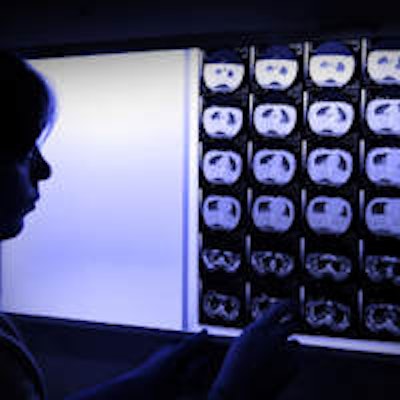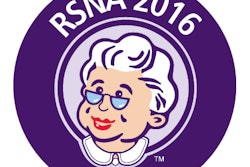
Despite suggestions that other medical professionals should be able to order and interpret imaging exams, patients would prefer that radiologists interpret their studies, according to research published in the October issue of the American Journal of Roentgenology.
A survey of nearly 2,000 patients found that they were much more comfortable with radiologists as image interpreters, at levels significantly higher than their comfort with nonradiologist interpreters, according to a group led by Dr. Jason Domina of the University of Michigan.
 Dr. Jason Domina of the University of Michigan.
Dr. Jason Domina of the University of Michigan."Radiologists are an integral part of patient care, and imaging is not a commodity that can be turned over to untrained medical providers," he told AuntMinnie.com.
Survey says
Domina and colleagues wanted to evaluate patient understanding of radiology and radiologists, as well as assess patient interest in direct consultation with a radiologist. To do so, the group conducted a survey that included 1,976 adult radiology outpatients at both an academic setting and a community hospital. Patients completed an initial survey and then received educational material and a follow-up survey (AJR, October 2016, Vol. 207:4, pp. 811-819).
The survey results showed a lack of understanding among patients about which exams include ionizing radiation, as well as the amount of training required to become a radiologist, the researchers found.
Regarding which exams include radiation, the survey showed the following:
- 10% of patients incorrectly identified ultrasound as having radiation.
- 45% incorrectly identified MRI as having radiation.
- 87% correctly identified radiography as using radiation.
- 63% correctly identified CT as using radiation.
- 62% correctly identified nuclear medicine exams as using radiation.
"There is significant room for patient education regarding this topic," the team noted. "Improvements [in patient understanding] can be as simple as providing a modality-based informational handout that provides a basic description of each examination and each method of image generation at the time of patient check-in."
In addition, patients significantly underestimated the length of training required to become a radiologist, Domina told AuntMinnie.com.
"The majority of survey respondents thought that radiologists either only needed a college degree or college and medical school degrees," he said. "But today's radiologists typically have at least 14 years of post-high school training. You can't substitute for that kind of experience."
Despite underestimating how much training radiologists needed, the majority of patients (73%) said they would be most comfortable with a radiologist reading their exam images, and this percentage increased to 81% after the respondents received educational material, the researchers found. Patients' comfort level with a nurse or physician assistant reading their images rather than a radiologist was low, both before and after receiving the educational materials.
Finally, 84% of the survey respondents expressed interest in meeting with a radiologist to discuss their test results. Of these, 43% said they weren't willing to pay for this service, 37% were willing to pay $10 to $30, and 20% were willing to pay $40 or more.
Face time
The current emphasis from professional organizations such as the American College of Radiology (ACR) is on radiologists providing "added value" to their services by making themselves more directly available to patients. Some imaging modalities may lend themselves to this kind of patient interaction, but some don't.
In any case, it's time for radiologists to get creative, perhaps by exploring the concept of a radiology consultation service, according to Domina and colleagues.
"Patient-radiologist interaction is not a new concept; in fact, a survey performed more than 20 years ago found that most patients desired to learn from the radiologist the result of their imaging examination at the time of the procedure," they wrote. "Because both patients and radiologists have an increasing desire to enhance their interaction, the [concept of the] radiology consultation service ... is gaining traction."
A consultation service could generate revenue -- or at least be revenue-neutral, the group concluded.
"Fortunately, patients are interested in meeting us, and a radiology consultation service could be financially feasible for a subset of this population," the authors wrote.



















